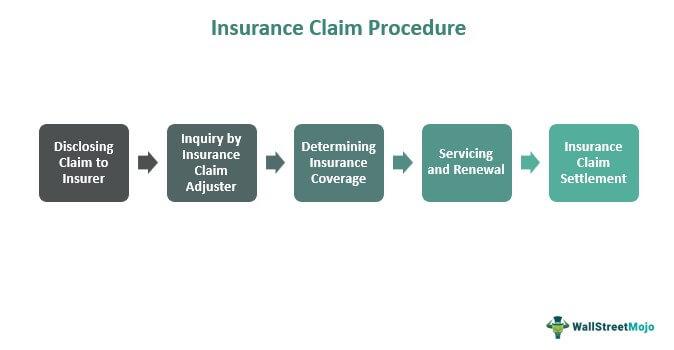Filing an insurance claim after an incident can feel overwhelming, especially when you’re already dealing with stress or unexpected challenges. But it doesn’t have to be complicated! With a little guidance and some simple steps, you can navigate the process smoothly and get the support you need without unnecessary headaches. In this post, we’ll walk you through how to file an insurance claim easily, so you can focus on what matters most—bouncing back and moving forward. Let’s dive in!
Table of Contents
- Preparing Your Documentation Before Filing the Claim
- Understanding Your Insurance Policy Coverage
- Step-by-Step Guide to Submitting Your Claim Online
- Tips for Communicating Effectively with Your Insurance Adjuster
- In Conclusion
Preparing Your Documentation Before Filing the Claim
Before you reach out to your insurance company, it’s crucial to gather all necessary paperwork and evidence related to the incident. This step will streamline the claims process and reduce the risk of delays. Start by collecting any relevant documents such as your insurance policy, proof of payment, and previous correspondence with your insurer. Additionally, compile clear photos or videos of the damage, accident scene, or any affected property. This visual evidence can greatly support your case by providing concrete proof of loss or damage.
Don’t forget to also prepare written statements from any witnesses or involved parties, if applicable. Keep detailed notes about the incident, including dates, times, and specific circumstances. Organize these documents in a dedicated folder, either physical or digital, so you can quickly access them when needed. Remember, being thorough and organized not only makes your claim easier to file but also demonstrates your commitment to a fair and transparent process.
Understanding Your Insurance Policy Coverage
Before diving into the claims process, it’s crucial to have a clear grasp of what your insurance actually covers. Policies can vary widely, and understanding your coverage details ensures you know what incidents and damages are protected, and which aren’t. Take time to review your policy documents or consult your insurer to clarify terms like deductibles, limits, and exclusions. This proactive step can save you from unexpected surprises and help you gather the right documentation when the time comes.
Keep an eye out for key coverage components, including:
- Coverage limits: The maximum amount your insurer will pay for a claim
- Deductibles: What you’re required to pay out of pocket before coverage kicks in
- Exclusions: Specific situations or damages that are not covered by your policy
- Special endorsements: Additional protections or riders specific to your policy
Understanding these elements empowers you to file your claim confidently and avoid delays caused by missing information or misunderstandings about your protection.
Step-by-Step Guide to Submitting Your Claim Online
Begin by gathering all necessary documents such as your policy number, a detailed description of the incident, photos depicting the damage or loss, and any police or official reports if applicable. Having these on hand will make the submission process smoother and quicker. Next, visit your insurance provider’s official website and locate their claim submission portal. Most insurers offer a user-friendly online form tailored for straightforward completion, with prompts guiding you every step of the way.
As you fill out the form, make sure to double-check your input for accuracy to avoid delays. Attach all required documentation—scanned copies or high-quality images work best. Don’t forget to review the policy terms or FAQs section for any specific claim-related instructions your insurer may highlight. Finally, submit your claim and save the confirmation number or receipt you receive, which will serve as proof that your claim is in process. Remember to monitor your email or the claim portal for updates and follow up promptly if additional information is requested.
Tips for Communicating Effectively with Your Insurance Adjuster
When speaking with your insurance adjuster, clarity and honesty are your best allies. Always provide concise and accurate information about the incident, avoiding speculation or assumptions. Keep your tone calm and professional, which helps foster a cooperative atmosphere. Remember, the adjuster’s job is to understand the facts clearly to evaluate your claim fairly. If you’re unsure about a question, it’s perfectly okay to ask for clarification or tell them you’ll get back with the information after verifying details.
Preparation goes a long way in making your conversations productive. Before any call or meeting, gather all necessary documents such as photos, receipts, and incident reports. Having these at your fingertips means you can quickly reference key details without delay. Additionally, consider these quick tips for smoother communication:
- Keep a detailed log of all interactions, including dates, times, and topics discussed.
- Ask for the adjuster’s full name and contact information for follow-ups.
- Politely recap important points at the end of each conversation to ensure mutual understanding.
- Don’t hesitate to request written explanations for any denials or complex terms.
In Conclusion
Filing an insurance claim doesn’t have to be a stressful ordeal. By staying organized, knowing the steps, and keeping clear communication with your insurer, you can breeze through the process with confidence. Remember, the key is to act promptly and keep all your documentation in order. Hopefully, this guide has made the whole idea of filing a claim a little less daunting. Here’s to turning a challenging situation into a smoother experience—one step at a time! If you have any questions or personal tips, feel free to share them in the comments below. Happy claiming!







